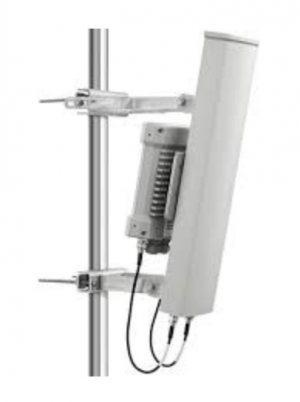5G: Antenna Sectoral
A sector antenna or "sector panel" is a directional antenna for outdoor applications. They are most often used by Base-Stations and can be seen, hung on cell phone towers. They are long, narrow antennas with high gains. Sector antennas consist of an array of dipoles placed in front of a shaped reflector. The size and shape of the reflector determines the performance of these antennas. The reflector is usually flat with some ridges or other features along the edges.
A sector antenna is almost always categorized by its azimuth plane 3-dB beam width. They are commonly available with 60 degree, 90 degree, and 120-degree directionality. Sectors are usually deployed higher up in the air and the height of deployment helps select the required antenna, as this impacts the gain and range of the antenna.
The main reflecting screen of the sector antenna consists of Aluminum and the antenna has a radome which is usually developed from a fiberglass material, this keeps the components inside the antenna safe and allows the antenna to withstand harsh weather conditions. Sector antennas are used extensively for cellular communication. The largest use of these antennas is for cell phone base-station sites.
The coverage area of sector antennas is determined by the projection of the radiation pattern on the ground, which can be adjusted by changing the down-tilt angle of the antenna. In some models this is done mechanically by manually adjusting the tilt of the antenna with an adjustable mounting bracket. In more recent sector antennas the pattern can be electronically tilted, by adjustable phase shifters in the feed of the individual dipole elements of the antenna. These are adjusted by a remote control circuit from the ground, eliminating the need for a technician to climb the antenna tower. To provide 360 degree coverage, multiple sector antennas are used and mounted back to back.
Referensi
